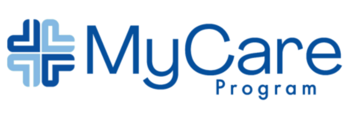Brief Overview: Also known as Painful Bladder Syndrome, characterized by pain, pressure, and discomfort in the bladder and is usually associated with lower urinary tract symptoms. Symptoms last longer than 6 weeks and are present in the absence of any other identifiable causes such as infection, cancer, radiation, stones, etc.
Prevalence: Wide variation. Up to 2% out of 100,000 people.
Etiology: Multifactorial, including epithelial permeability, mast cell activation, neurogenic inflammation, infectious, and autoimmunity.
Risk Factors: 17x higher risk if 1st-degree relative with IC. 10x more likely to have IC if history of childhood bladder problems.
Commonly Associated Conditions: Pelvic floor pain, IBS, fibromyalgia, chronic fatigue, multiple allergies, Sjogren, chronic headaches, depression/anxiety/panic disorder. In females- vulvodynia, endometriosis. In males- chronic prostatitis, BPH.
Common Symptoms: Urgency, frequency (>10-12x/d), nocturia, dysuria. Flares surrounding the menstrual cycle. Chronic pelvic pain and pressure. Pain associated with filling/emptying.
Physical Findings: suprapubic tenderness. Females- Pelvic/bimanual exam for palpation of bladder/urethra/pelvic floor muscles for tenderness. Males- DRE for palpation of prostate and pelvic floor musculature, external genitalia exam.
Common Labs, Imaging, and Tests:
- Symptom evaluation/voiding diary, pain scores
- UA C&S, urine cytology in high risk
- Urodynamics- Evaluates detrusor function, which may have increased sensitivity or pain on filling and decreased capacity. Late stages may show a significant decrease in capacity and bladder compliance
- Cystoscopy- excludes other bladder pathology. Findings may show Hunner ulcerations. Cystoscopy w/ hydrodistention is performed under anesthesia- reinspection after hydrodistention shows petechial hemorrhaging and terminal hematuria.
Common Treatments:
- 1st line
- Stress reduction
- Exercise
- Warm baths/sitz baths
- Stool softeners
- Avoidance of bladder irritants like spicy foods, caffeine, alcohol, acidic beverages, artificial sweeteners
- 2nd line
- Pelvic floor physical therapy
- Multimodal pain management
- Medications:
- Hydroxyzine
- Amitriptyline
- Cimetidine
- Medications for LUTS/spasms including oxybutynin, vesicare, myrbetriq, gemtesa etc.
- Intravesical instillations or “bladder cocktails”- includes lidocaine, heparin, steroid. Usually done as a series and/or prn
- DMSO instillations
- 3rd line: cystoscopy w/ hydrodistention, fulguration of ulcerations
- 4th line: neuromodulation- Interstim etc
- 5th line: intradetrusor botox
- 6th: end stage- urinary diversion +/- cystectomy. May eliminate frequency but not always the pain component.
Potential Complications and Contraindications: n/a. Main concern is quality of life and development of depression w/ chronic pain and LUTS.
General Health and Lifestyle Guidance: Focus on general health management. Exercise, healthy diet, hydration. Avoiding spicy/acidic foods, irritants such as coffee/tea/soda/alcohol. May benefit from low acid, anti-inflammatory diets.
Suggested Questions to Ask Patients:
- How are your LUTS- urgency, frequency, nocturia
- Is your pain suprapubic, abdominal, bladder, or urethral? Rate your pain.
- Are you drinking the recommended daily water intake? 6-8 8oz glasses of water is typical.
- How many servings of coffee/tea/soda/alcohol daily are you consuming? Can we back down or eliminate this?
- Do your symptoms flare around your menstrual cycle?
- Are you taking your medications prescribed for symptom control? Are you having any side effects of these medications? Some may be taken daily or prn.
- Are you having any increased stress or anxiety? What are you doing to manage these? Acupuncture, yoga, massage, therapy/counseling, meditation, etc
Suggested Talking Points:
- Tips to encourage daily water intake
- Lists of high-acid foods and beverages
- Depression screening
- Pelvic floor PT


